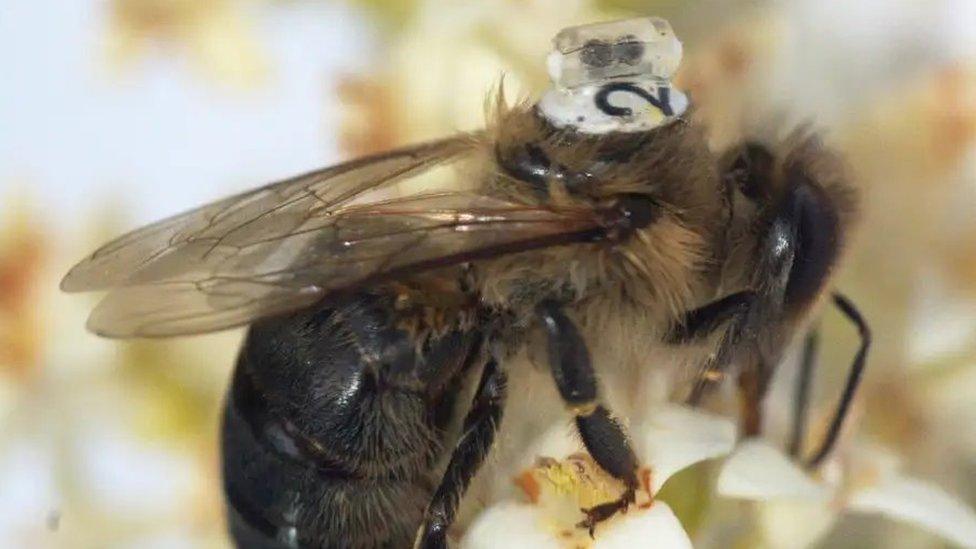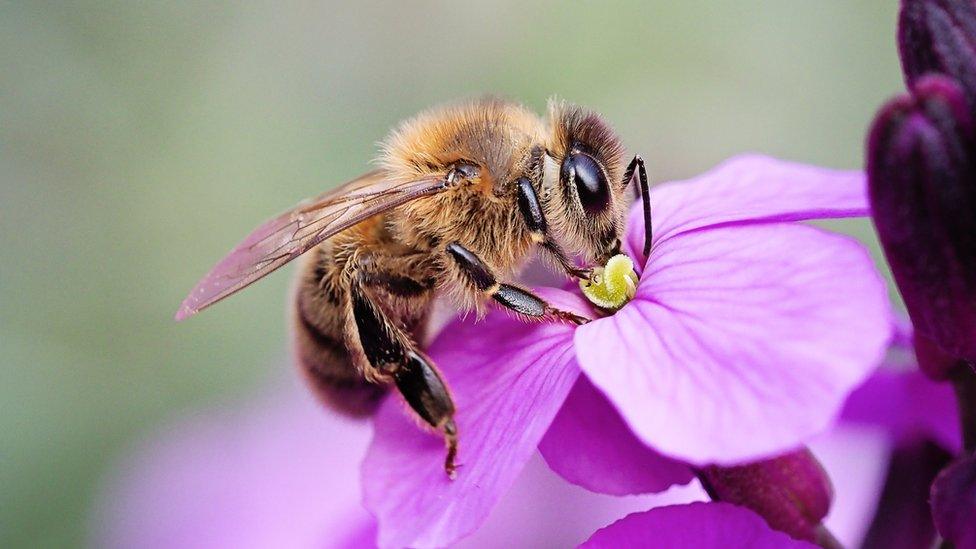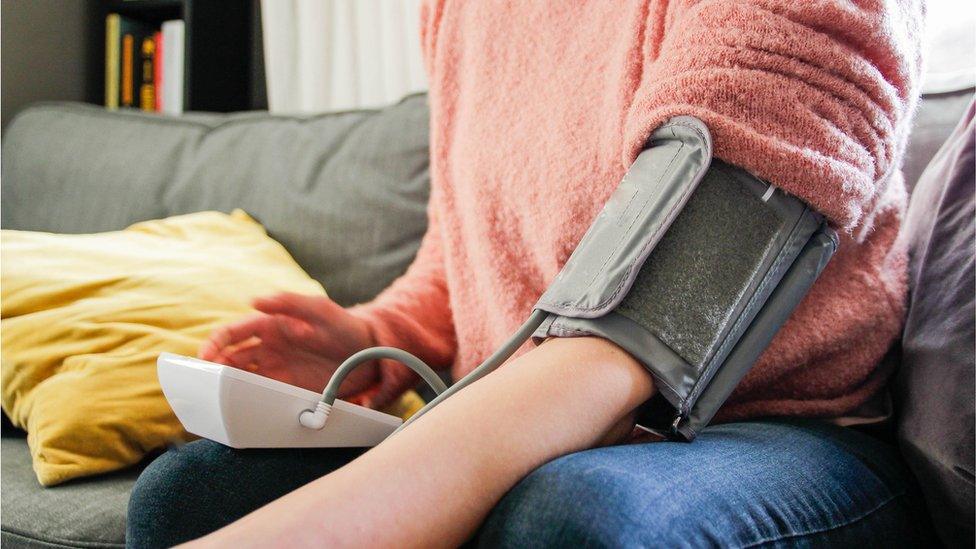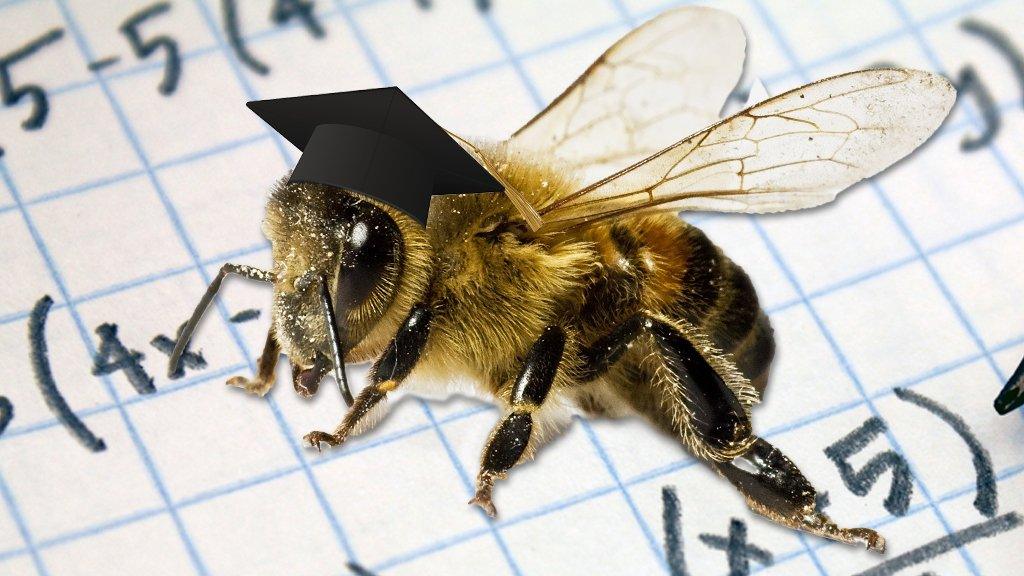Bees: Check out these tiny backpack-wearing bees
- Published
- comments

"Nice backpack", "Thanks, I got it from Bee-lanciaga"
Check out these bees wearing teeny-tiny backpacks in the name of science!
They were designed by scientist Bernhard Gleich at Philips Research in Germany, and his colleagues, who wanted to create a new tiny sensor which could help doctors to get better information about their patients.
So, they created a tiny 1-millimetre sensor to help monitor things like temperature and location.
Then to test it out they decided to turn it into a tiny backpack and let some bees take it for a spin!
How does the sensor work?

The sensor is made using two tiny magnetic spheres that repel or push each other away, sitting inside a plastic house.
One is fixed in the house, and the other can twist and oscillate - meaning move or swing from side to side regularly.
The researchers are able to keep track of the information in the sensor wirelessly up to 25cm away by sending out little pulses of electricity from electromagnetic coils to create a magnetic field that reacts with the magnets.
By looking at the distance between the magnets, how much they oscillate and how much they grow and shrink helps the team to figure out the sensor's temperature, pressure and location.
How did they test it out?

Scientists were able to monitor the movement of a honey bee (like this one)
The researchers took the sensor through two tests.
In one experiment, the researchers dropped the sensor inside a long, wiggly tube, similar to a human intestine. They then recorded its movement and location in 3D.
They also tried attaching the sensor to the back of a honeybee.
This allowed the researchers to follow the bee's journey from flower to flower, and map it out using information from the sensor.
"It was possible to track the path and the orientation [of bees in flight]," says co-author of the study. "It worked astonishingly well."

The tiny sensor could be swallowed instead of using machines to help monitor people's blood pressure
The team think their tiny sensor has lots of potential uses that would be helpful, including measuring a person's blood pressure, or even being swallowed by a person to help doctors to get a better picture of their stomach and intestinal health, which could then be pooped out.
"The deployment of the device is much less stressful and also much less costly [than other devices]," said Jürgen Rahmer.
However, they will need to do around five-eight more years of research first to make sure the sensors work properly before they are tested on people.
- Published5 June 2019

- Published27 March 2023

